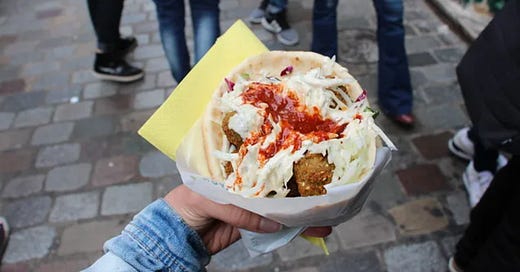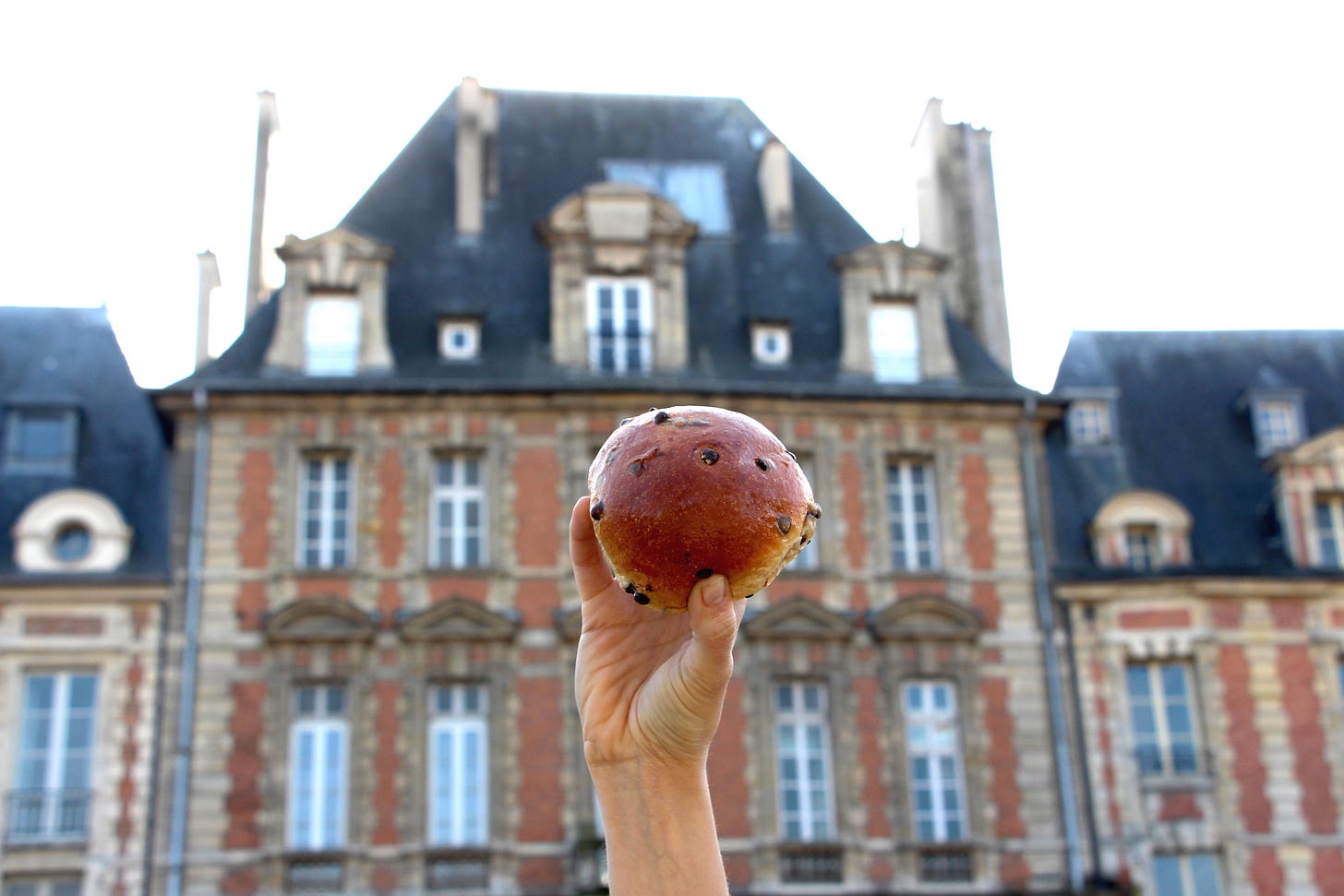A Perfect Day in the 4th Arrondissement
Perhaps Paris' most historic – and most picturesque – quartier
As compared to other European capitals like London or Rome, Paris is actually relatively well-contained and pretty walkable. And while the streets definitely don't run in straight lines (much to the horror of this native New Yorker), it’s relatively easy to see where you're going thanks to the system of arrondissements or districts, numbered 1 to 20, which spiral out in a snail shell shape from the first in the center to the 20th in the northeast.
After fifteen years here, one of my favorite activities is to explore unfamiliar corners of Paris, getting to know the personality and unique offerings of each of the arrondissements. And this gave me the idea for a new series exclusively for my subscribers: my hit list, if you will, of the must-dos (and must-eats) in each of Paris’ 20 districts.
We’ve already ventured through the 1st arrondissement, home to the Louvre, and the 2nd arrondissement, Paris’ smallest. The 3rd arrondissement encompasses most of the Marais; the remainder, as well as some of Paris’ most prized real estate, is located in today’s neighborhood. Welcome to the 4th arrondissement!
The 4th Arrondissement in Short
The 4th arrondissement picks up where the 3rd left off, with its northeast limit the rue Rambuteau and western edge the boulevard de Sébastopol. To the east-southeast, it's delineated by the Place de la Bastille and the re-emergence of the Canal Saint-Martin before it meets the Seine. The 4th also encompasses most of the Ile de la Cité and all of Ile Saint-Louis.
The 4th is one of Paris' oldest and most historic neighborhoods. The islands in the middle of the Seine were core parts of Ancient Roman Lutetia (though very little ancient traces remain – for that, you’ll need to wait for next week.) These days, Ile Saint-Louis is known for Paris’ most expensive ice cream and some of its most expensive real estate, while Ile de la Cité is home to Notre-Dame Cathedral and Sainte-Chapelle, which I neglected to include in my exploration of the 1st, not realizing until… uh… right this second that Ile de la Cité belongs to not one but two arrondissements. (Who knew?)
Much like the 3rd, the 4th was largely untouched by Napoléon III's reimagining of Paris’ city center, boasting not just cobbled streets but beautiful urban mansions, many of which have been converted into quirky museums, not to mention Paris’ oldest planned square. And we can't forget the later monuments: the ornate 19th century Hôtel de Ville (city hall) and column on Place de la Bastille, once home to the eponymous prison.
The Landmarks: Hôtel de Ville, Centre Pompidou, Place des Vosges, Mémorial de la Shoah, Place de la Bastille, Tour Saint-Jacques, Notre-Dame Cathedral, Mémorial des Martyrs de la Déportation, Musée Carnavalet
The Vibe: Historical, picturesque, cultural.
My Perfect Day in the 4rd Arrondissement
If you’ve spent much time in other European capitals, you may be familiar with signs pointing you towards the Old Town, Vieille Ville, or Historic Center. In Paris, history is everywhere, and there’s not one historic old town. But if I had to give that status to a Parisian neighborhood, it would indeed be the 4th, which is also one of my favorite areas to find myself in at around 4pm for le goûter, or the 4 o’clock snack.
(But more on that in a bit.)
Keep reading with a 7-day free trial
Subscribe to Emily in France to keep reading this post and get 7 days of free access to the full post archives.




